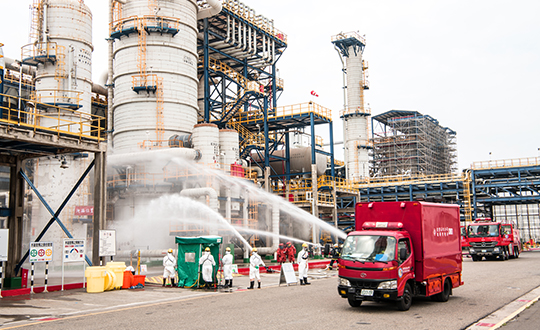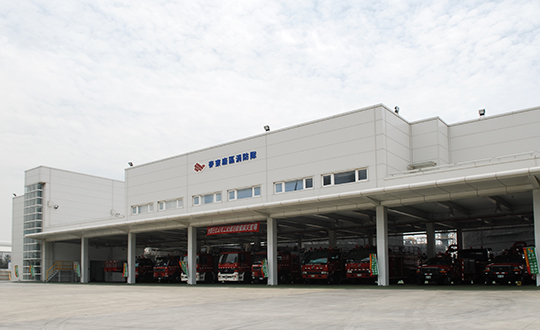
Fire safety personnel training and certification
Fire safety management personnel
FPG separated fire safety management from the safety and health system in 2012, and established a complete fire safety management organization to prevent major fire incidents from occurring. FPG constructed a multi-purpose fire safety training classroom suitable for petrochemical plants and general sites, and planned three stages of professional training courses with a total of 85 hours and certifications, in order to strengthen FPG's fire safety management and professional skills.
Incident commander
When a leakage incident or fire incident first occurs at a petrochemical plant, proper response will be able to prevent the situation from worsening and reduce damages caused by the disaster. To strengthen our emergency response ability, FPG has collaborated with National Yunlin University of Science & Technology (Environmental Incident Response Information Center) in offering 28 hours of incident commander training.

Fire safety training classroom (firefighting water system teaching area)

Fire safety training classroom (alarm equipment teaching area)
Fire safety disaster relief capabilities
Park firefighting water system
The main firefighting water pipeline of FPG's Mailiao Park circles the entire park, so that water can be provided from two directions. There are 7 firefighting stations along the circular water pipeline, and each station has 1 main pump and 2-3 backup pumps. At present, total firefighting water stored is approximately 1.62 million tons, which can be used to fight a single largest fire incident for 124 consecutive hours without replenishment.

Professional fire brigade
FPG has a professional fire brigade to handle the different types of fire incidents that may occur in Mailiao Park. The fire brigade receives live fire training at Texas A&M University, and the fire brigade is equipped a variety of advanced firefighting vehicles and disaster relief equipment based on the fire safety design of petrochemical plants in Japan and the US, in which two imported firefighting vehicles are equipped with high flow turrets (10,000 GPM) that have a range of 100 m. Combined with the 24 inch main firefighting water pipeline of Mailiao Park, the vehicles have better firefighting capabilities than government firefighting vehicles.

Mailiao Industrial Complex Sixth Naphtha Cracker Disaster Exercise

Mailiao Industrial Complex Sixth Naphtha Cracker Fire Brigade


